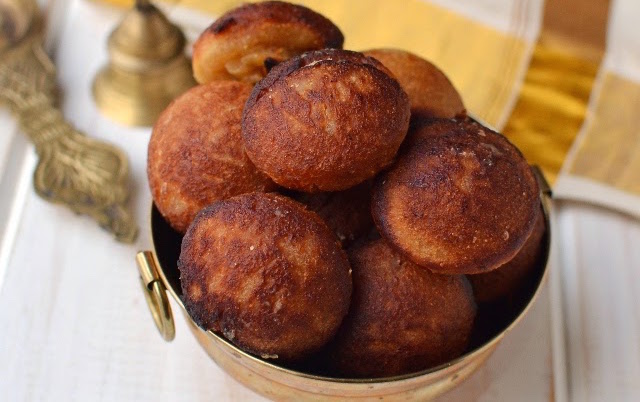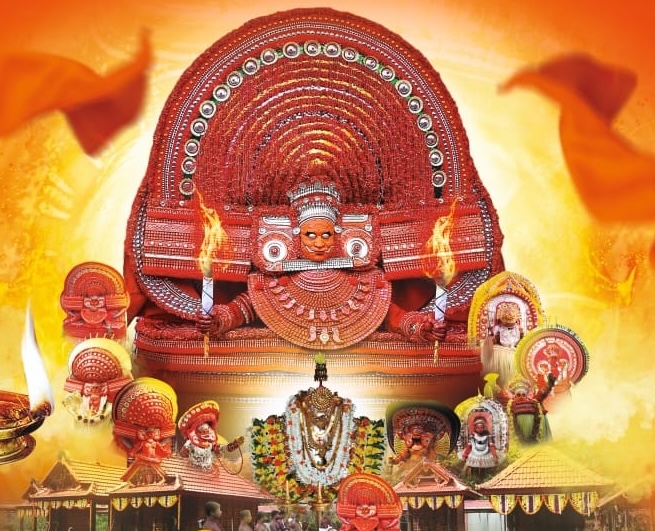Pooram Kali
Pooram kali is a traditional dance ritual performed by men during the nine-day Pooram festival in Bhagavathi temples. The Pooram festival begins with the Karthika asterism and concludes with the Pooram asterism of the month of Meenamasa according to the Malayalam calendar to honor Kamadeva, the god of love.
The Pooram kali dance itself is performed by a troop of young men decked in lion costumes around a huge, multi-tiered, lit lamp, also known as a "Nilavilukku." The dance involves masculine movements and acrobatic, martial art steps. No singers or musicians accompany the dance; instead, the dancers themselves keep rhythm by singing, clapping, and executing synchronized foot-thumping movements. The dancers usually observe a month of abstinence and undergo strenuous practice before the performance. Most of the songs sung are hymns from The Ramayana or The Bhagavata.
Pooram kali at Perne
Pooram Kali in Perne has its own uniqueness in rituals and celebration. It is celebrated in Mina Masa. People from the community gather in Perne six days ahead (Pushya nakshatra) of the full moon day. Bandara is brought on the day, and a booth (Chappara) is put up. For five days, the custom of "Hu hakuvudu" takes place. This custom is done by Naltyar of the Shrine, and the rituals vary in their style each day. Every day during this festival, rituals and poojas are offered to the God. On the last day, Acchanmar Kulichu Nikkel, Darshana are witnessed. All these celebrations put together are called "Poorostavam."
On this occasion, "Pooram kali" is done in Kavu. Vaniyar's don't play it; it's generally done by Yadava's or Maniyani's from the Mulleria, Karadka area. They come to Perne on the second day, and they play Pooram Kali for about two hours. They stand in a circle in front of Bhagavathi Devi shrine with a big lamp (Deepa) in the middle. To begin with, Ganapthi shotra is sung, followed by song stories of various gods. On the last day, Pooram kali starts in the morning and ends with Kulichu Nikkel. In the end, they take revolutions around the temple to seek blessings of Devi along with Darshana people. "Kannagat Bhagavathi" is the goddess of Yadavas, and she shares the same shrine with Muchilot Bhagavathi. This could be the reason for celebrating Pooram Kali in Perne.




